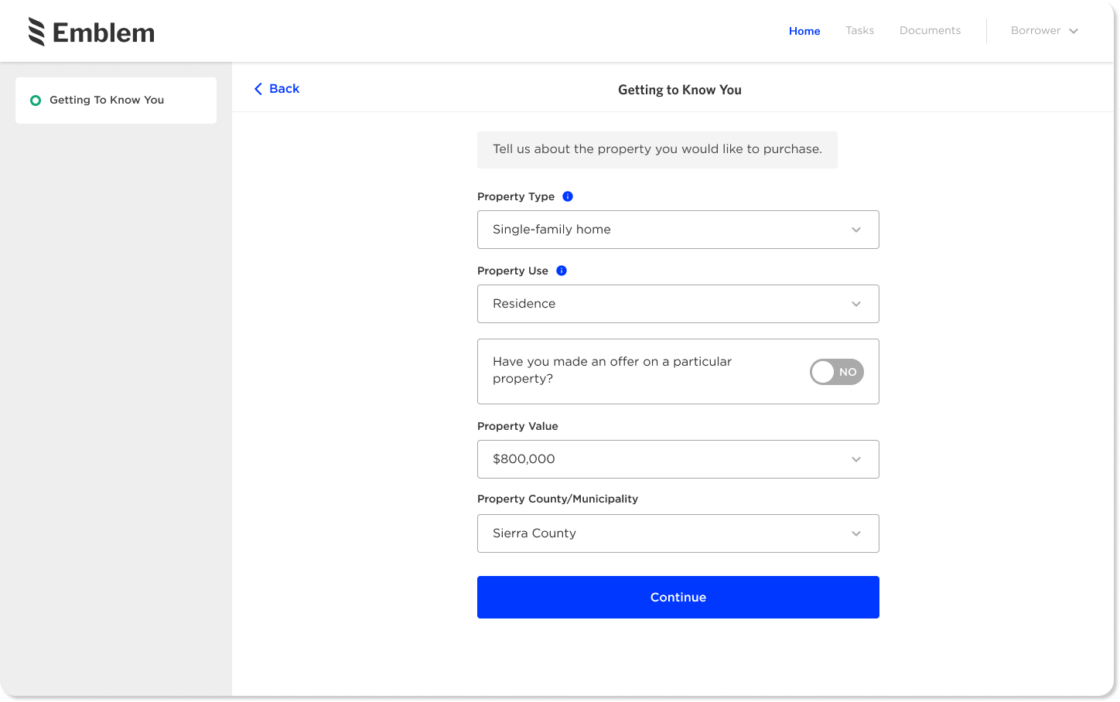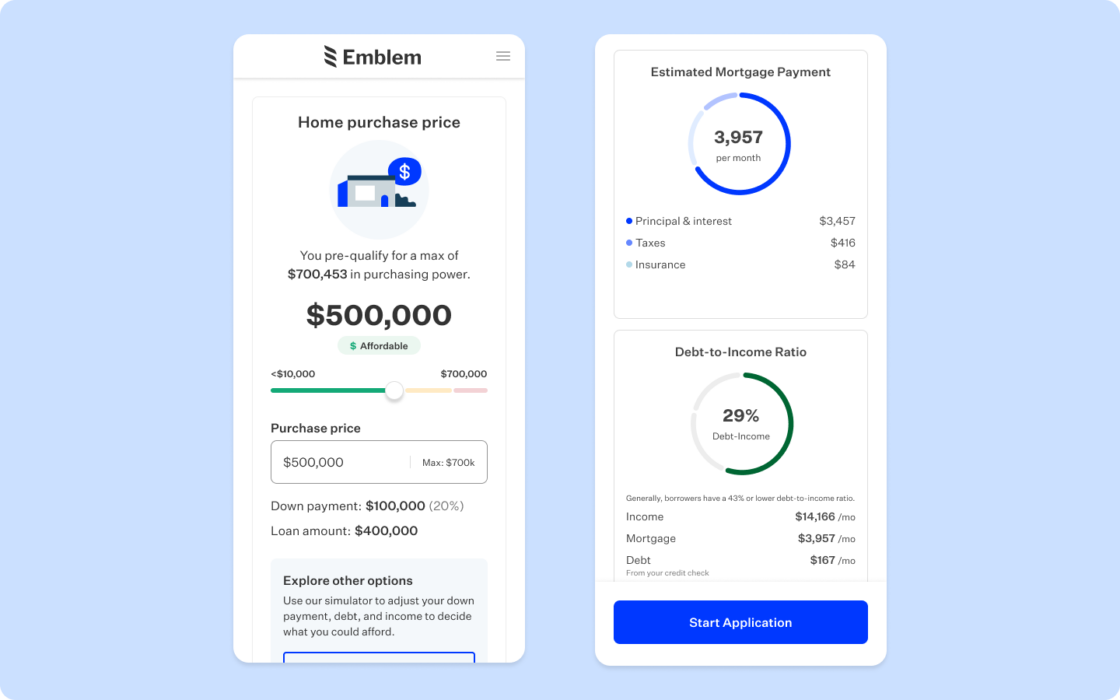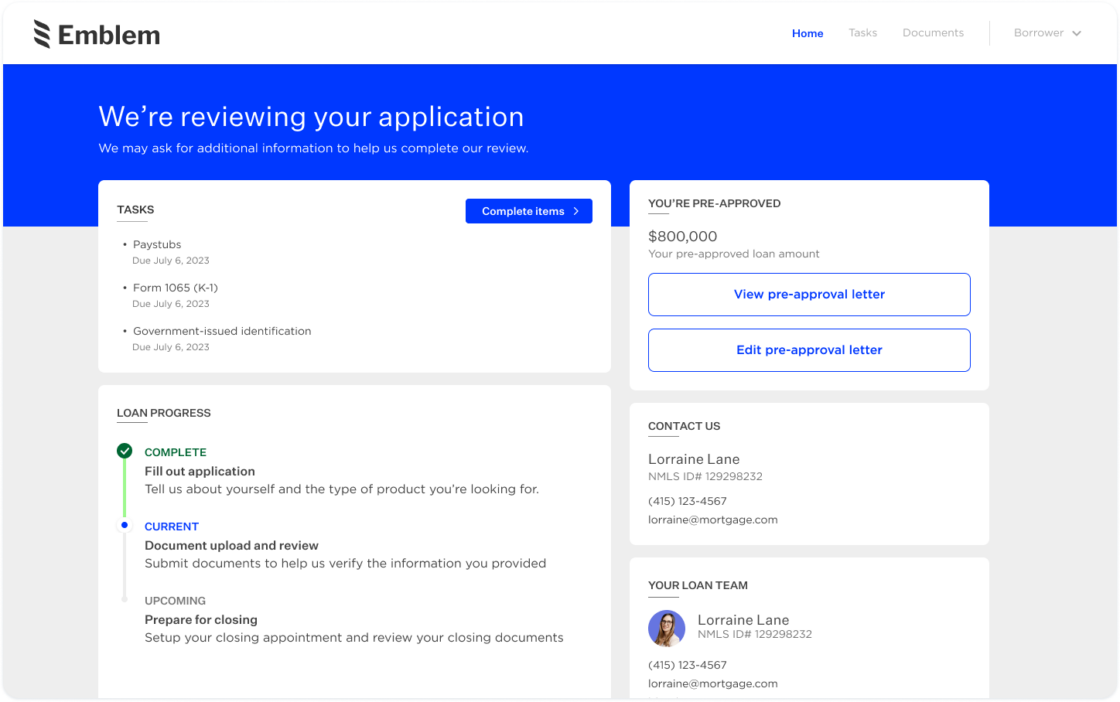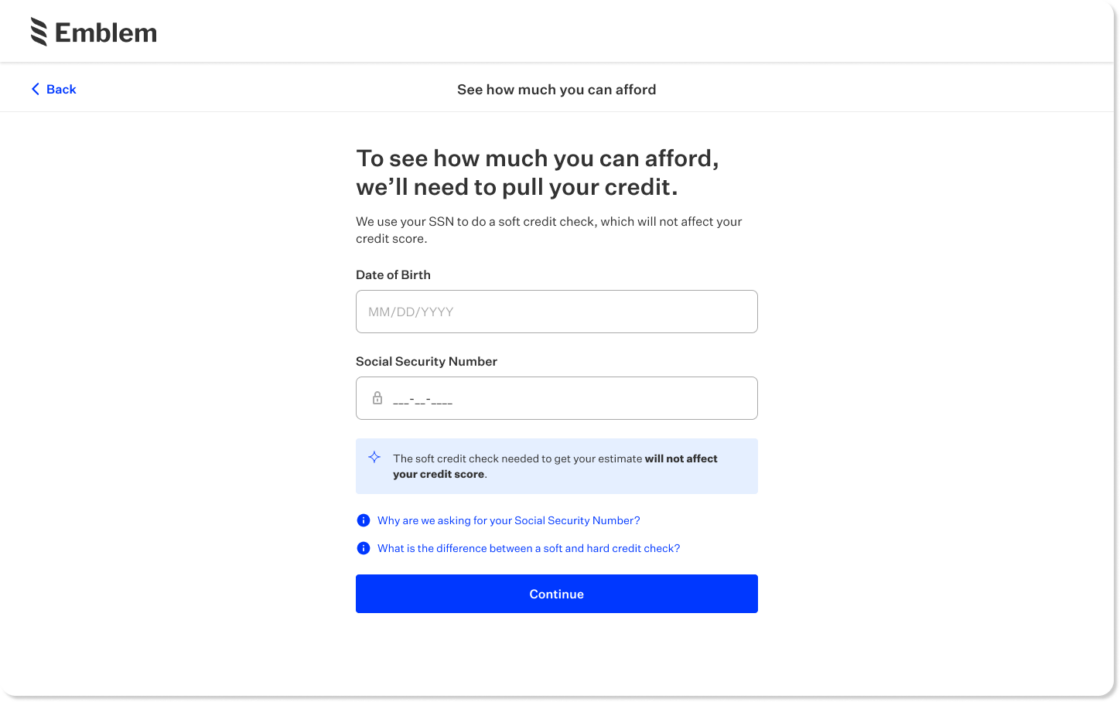Power the winning trio with mortgage tech
Uncover the key to the mutually beneficial loan officer, borrower, and real estate agent relationship: Your mortgage technology.
Start learning about Power the winning trio with mortgage tech
Create a home loan process to reach a wider borrower audience from pre-application to close.
With features that enable customers to feel understood, your borrowers will know they're in the right hands.
Provide an easy and intuitive application process through a borrower loan app with educational, dynamic questioning and self-serve capabilities.
Establish trust and qualify leads even before application with our loan scenario simulator and soft credit pulls.
Stay on top of outstanding tasks and identify up to 65% of conditions upfront with triggered, automated follow-up notifications.
Give borrowers a great first impression with a soft credit pre-qualification that reduces friction, cuts costs, and protects them from tri-merge solicitation.




Subscribe to get Blend news, customer stories, events, and industry insights.
Sign up for a personalized demo and get started in 4 weeks or less